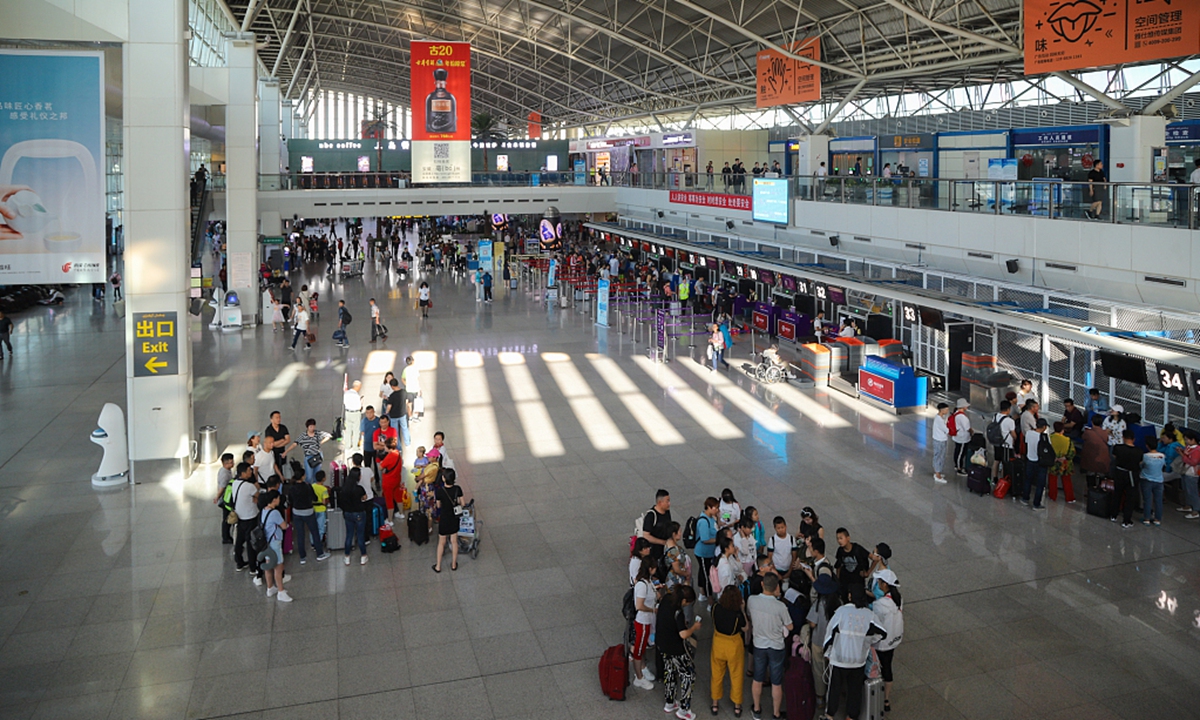SOURCE / AVIATION
Second and third-tier Chinese cities give more impetus for regional flying: Embraer

Photo: VCG
The Chinese market is big enough to welcome more rivals, as second and third-tier cities are giving more impetus for an increase in market demand, Brazil-based regional flying service provider Embraer said on Friday.
Embraer said its E-Jet was among the first aircraft types to restore flight frequencies across airline networks in China. Currently, there are 99 E-Jets in operation in China, flying across 550 routes, connecting 150 cities at home and abroad, and transporting some 20 million passengers annually.
"The E-jet is the complementary [aircraft] for the ARJ21, and the Chinese market is big enough to welcome more rivals," Guo Qing, head of the Embraer China said on Friday.
He added that provinces and regions such as Yunnan, Xinjiang and even cities in northeastern Chinese provinces are the regions with big market potential.
His remarks were made at a forecast briefing meeting, which said China will take delivery of 730 new aircraft with up to 150 seats over the next 10 years, driven by market demand.
The report is also part of the global forecast, as 4,420 new jets with up to 150 seats will be delivered through 2029, of which 1,220 will be to the Asia Pacific. In China, the company said 93 percent of deliveries will fulfill the market growth, and 7 percent will replace aging aircraft.
The company cited China's effective control of COVID-19, as well as the huge airport market, as the main reasons for China's lead in the recovery of global aviation. The company also said China will enjoy a 5 percent compound annual growth rate in terms of passenger transport in the next 10 years.
The forecast is higher than previously, as last year the company predicted 620 new aircraft in the next 10 years, with Guo accrediting the growth "to demand from second and third-tier cities."
The China-developed ARJ21 regional jetliner, designed with a capacity of 78 to 90 seats and a range of 3,700 km, has seen its total deliveries reach 38, with the latest delivery to Jiangxi Air, according to its developer the Commercial Aircraft Corporation of China in November.
Boeing said in November that it expects China's airlines to acquire 8,600 new airplanes valued at $1.4 trillion and commercial aviation services valued at $1.7 trillion over the next 20 years, reflecting an expected robust recovery after the COVID-19 pandemic is finally controlled.
The International Air Transport Association said earlier this month that passenger bookings of China's carriers continue to climb, compared to a weak recovery of passenger demand, explaining that China's domestic traffic was down just 1.4 percent in October compared to October a year ago.

